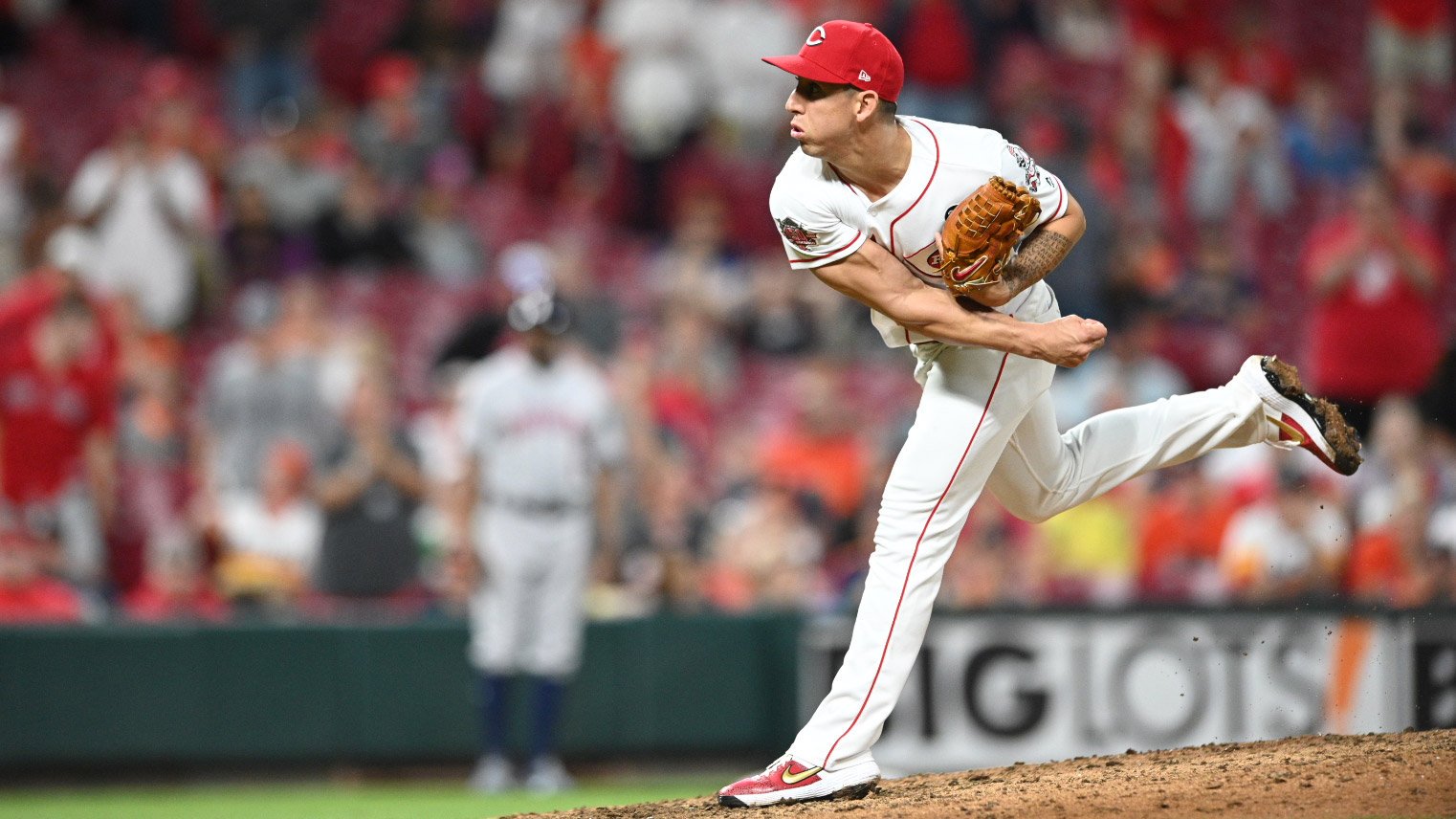
I’m sure everyone can remember Michael Lorenzen’s abysmal start to the season — but as of late Lorenzen has returned to his 2019 form. Lorenzen’s rough start to the season was first detailed here by Matt Korte. Lorenzen has had two different seasons thus far:
First 7 appearances:
- 5.1 IP, 3 HR, 0.375 BABIP, 11.08 FIP, 6.32 xFIP
Last 8 appearances:
- 15.1 IP, 0 HR, 0.244 BABIP, 3.53 FIP, 5.18 xFIP
Lorenzen has made multiple changes including throwing his fastball less and changeup more and decreasing his fastball velocity. Lorenzen threw his FB 45.9% and changeup 10.7% in his first 7 appearances while he now is throwing his FB 39.2% and his changeup 20.8%. The change in pitch mix has thrown off hitters who in Lorenzen’s first 7 appearances recognized his reliance on his fastball. In his first 7 appearances, his velocity was up to 97.6 mph but a lack of control caused a -0.97 wFB/C (Fastball runs above average per 100 pitches). More importantly, this also caused his secondary pitches to also be less effective:
- -8.39 wSL/C (Slider runs above average per 100 pitches)
- -3.97 wCT/C (Cutter runs above average per 100 pitches)
- -14.14 wCH/C (Changeup runs above average per 100 pitches)
His fastball, however, is still his most valuable pitch at a 0.116 xBA, 0.280 xwOBA, and 30.2 Whiff%. When Lorenzen decreased his FB to 96.6 mph in his last 8 appearances, his pitches were much more effective:
- 1.48 wFB/C
- 1.38 wSL/C
- -2.28 wCT/C
- 3.14 wCH/C
In his last 8 appearances, Lorenzen’s Hard Hit% (% of batted balls with an exit velocity of 95 mph or higher) went from 31.6% to 23.4% (98th percentile in MLB). Also over the last 8 games, his EV was 81.1 mph with 0.0 Barrel% compared to 88.5 mph EV and 15.8 Barrel% in his first 7 games. (Barrel% = % of batted-ball events whose comparable hit types in terms of exit velocity and launch angle have led to a minimum .500 batting average and 1.500 slugging percentage).
Lorenzen’s BABIP (batting average on balls in play) has returned to a reasonable number. All of these season segments we are looking at are super small sample sizes. His 0.375 BABIP over the first 7 games was not sustainable. His BABIP has been 0.244 BABIP over the last 8 games for a season average of 0.279 – below the MLB average. The much higher BABIP is a big part of Lorenzen’s inflated FIP of 11.08 in his first seven appearances.
Lorenzen isn’t throwing more balls into the strike zone (35.3 Zone% vs 33.3 Zone%) over his last 8 games, yet, the placement of his pitches has improved and resulted in better success as noted. Here’s an example of his fastball painting the strike zone for a strikeout against Dexter Fowler:
And another against Kyle Schwarber:
Conclusion
The same story is true as from earlier in the season — more emphasis on control instead of velocity will lead to success. A slower, more controlled fastball allows for Lorenzen’s other pitches to be more effective. Lorenzen’s walk rate (14.7%) remains a huge problem. But Lorenzen doesn’t need to overpower batters with his fastball. A 0.116 xBA and 0.285 xwOBA is enough proof to show for that.
Lorenzen has earned a spot start tonight against the Pittsburgh Pirates. It will be his first start of the season at a monumental part of the Reds final stretch. The Reds are only 1.5 GB the St. Louis Cardinals for 2nd place in the NL Central and 1.0 GB the San Francisco Giants for the 2nd Wild Card spot in the NL. The Reds are relying on Lorenzen to give them multiple innings of solid pitching before going to other relievers.



I’d like to see the spin rate on his fastball from the beginning of the season to now. With my eyes it seemed faster but much straighter. Now it seems to have much more movement on it. I wonder what changes were made to accomplish that.